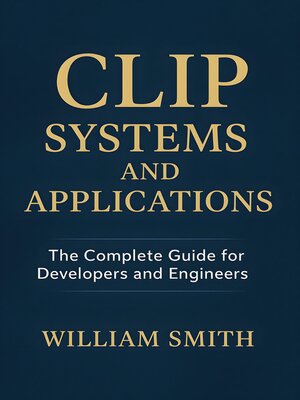CLIP Systems and Applications
ebook ∣ The Complete Guide for Developers and Engineers
By William Smith

Sign up to save your library
With an OverDrive account, you can save your favorite libraries for at-a-glance information about availability. Find out more about OverDrive accounts.
Find this title in Libby, the library reading app by OverDrive.



Search for a digital library with this title
Title found at these libraries:
| Library Name | Distance |
|---|---|
| Loading... |
"CLIP Systems and Applications"
"CLIP Systems and Applications" is an authoritative resource that delves into the theoretical foundations and real-world deployment of CLIP (Contrastive Language-Image Pre-Training) architectures. The book meticulously unpacks the principles of contrastive learning, detailing the alignment of vision and language embeddings and the nuances of various CLIP model architectures, from transformer-based designs to efficient CNN variants. Readers are guided through advanced preprocessing techniques, loss functions, and the exceptional zero-shot and few-shot generalization capabilities that distinguish CLIP systems within the multimodal AI landscape.
Spanning the entire CLIP pipeline, this volume offers in-depth guidance on engineering web-scale multimodal datasets, managing label noise, and ensuring fairness and compliance in large-scale data usage. System architects will benefit from comprehensive chapters on distributed training, high-throughput pipeline design, and resource optimization for GPU and TPU environments. The book further explores state-of-the-art inference and serving strategies—including scalable index construction, edge deployment, monitoring, and continuous model improvement—essential for robust real-world applications.
Going beyond the fundamentals, "CLIP Systems and Applications" addresses advanced practical deployments in search, retrieval, recommendation, and content moderation, as well as emerging topics such as fine-tuning techniques, adversarial robustness, ethical considerations, and rigorous evaluation methodologies. The final chapters illuminate the frontiers of multimodal AI, highlighting multilingual expansion, integration with generative models, new modalities, sustainable practices, and promising research avenues. This text is an indispensable reference for researchers, engineers, and practitioners seeking a holistic understanding of CLIP and its transformative role in next-generation AI systems.







